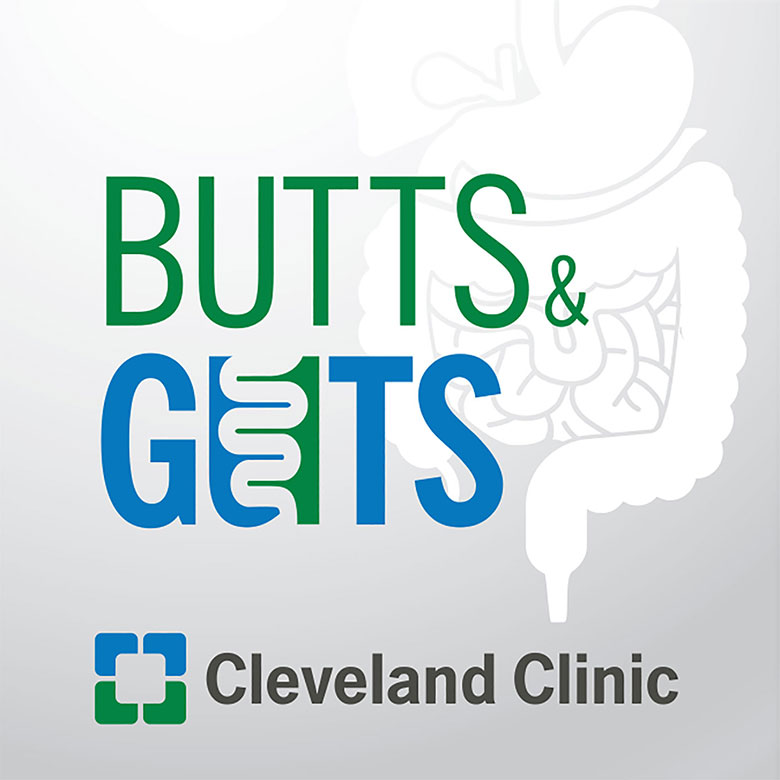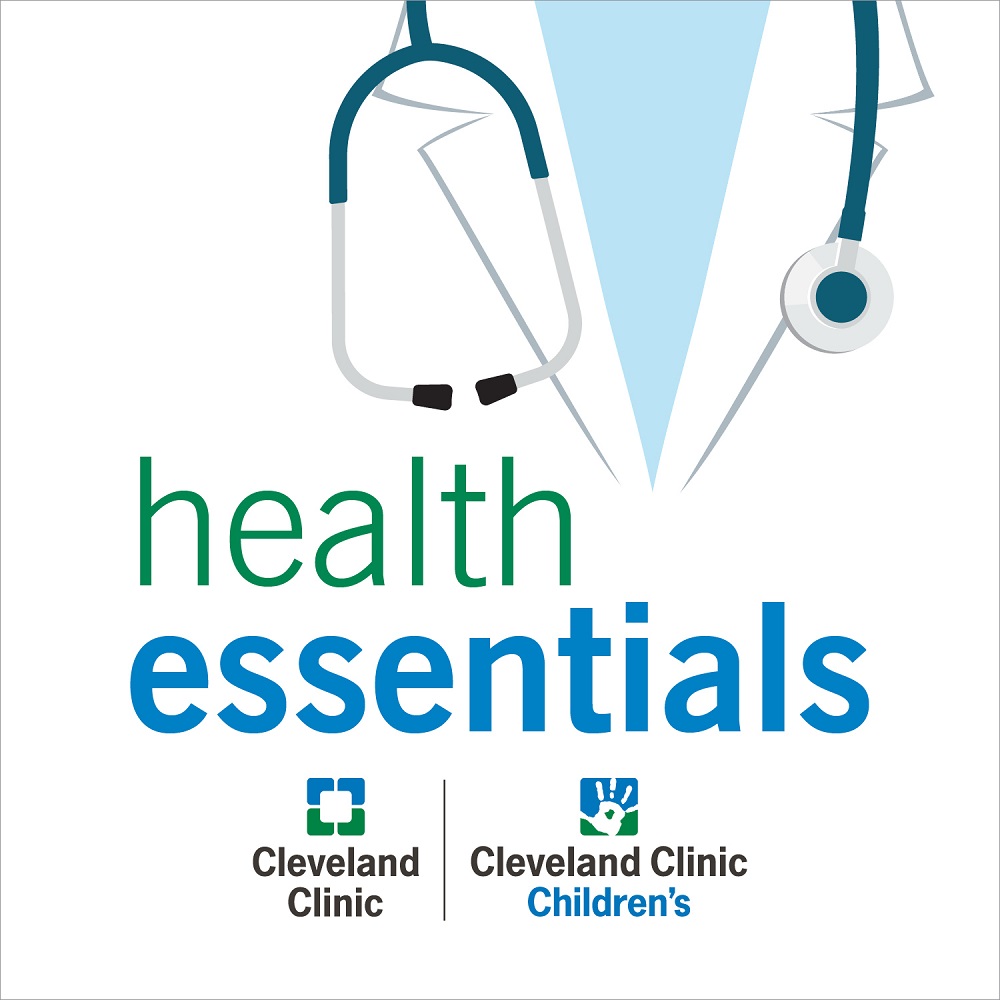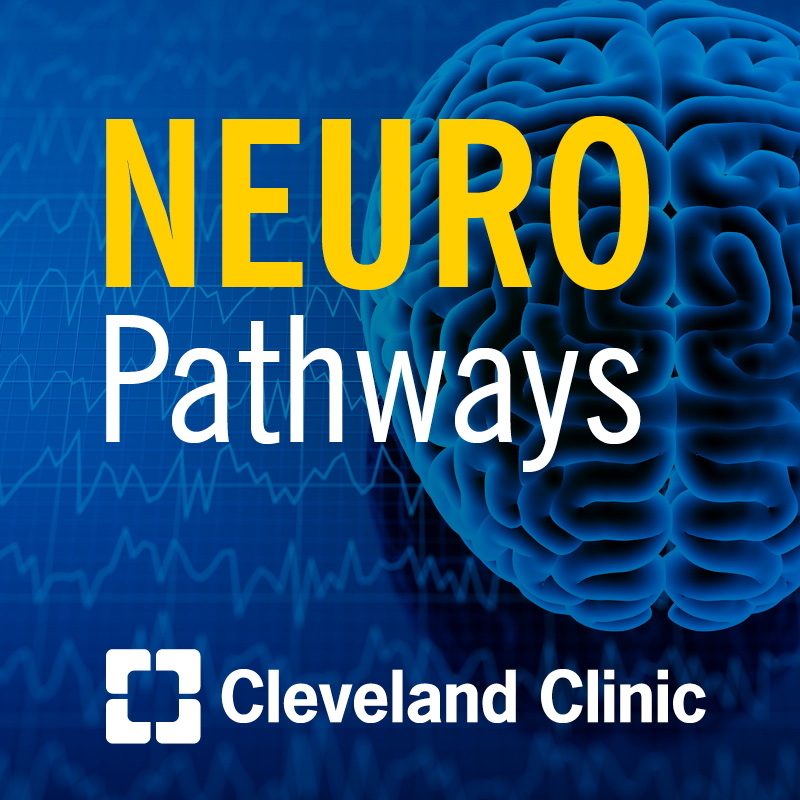Talking Tall Rounds®: Diagnosis and Management of Hypertrophic Cardiomyopathy
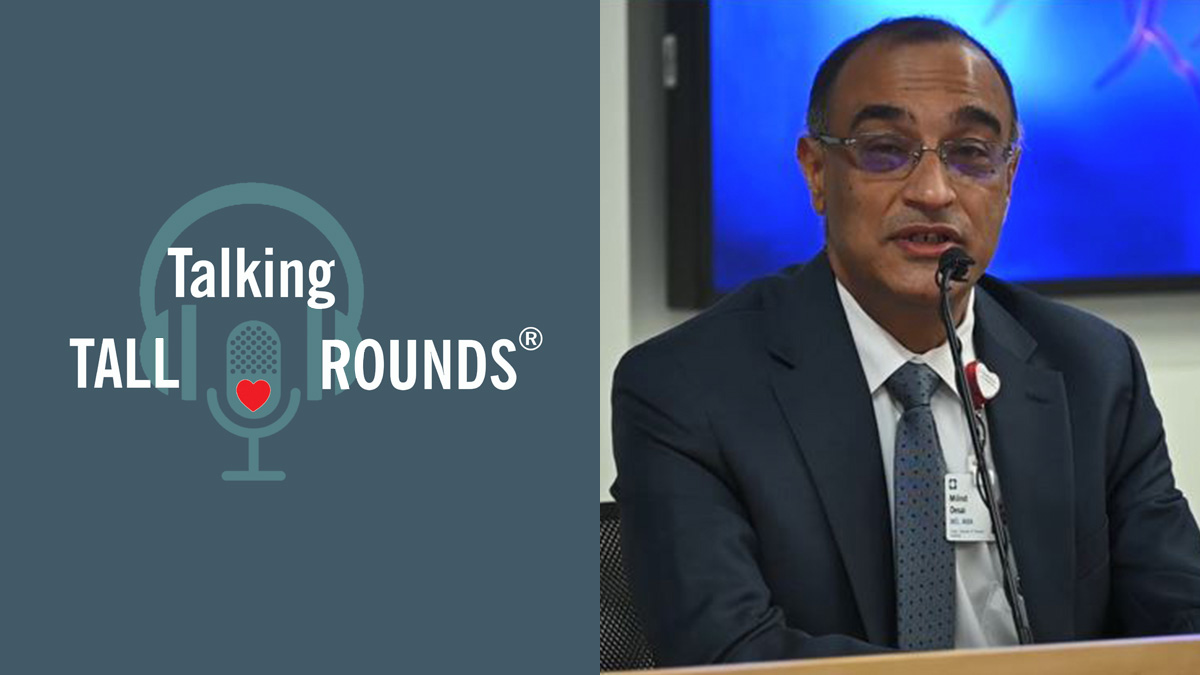
Dr. Milind Desai provides an overview of the Contemporary Approaches to the Diagnosis and Management of HCM Tall Rounds® session.
Enjoy the full Tall Rounds® & earn free CME
- Case Presentation: Erika Hutt Centeno, MD
- Role of Echo, Strain and Stress Echo: Zoran Popovic, MD
- Role of Advanced Imaging: Bo Xu, MD
- Current State of Medical Therapies: Maran Thamilarasan, MD
- Septal Reduction Therapies: Nicholas Smedira, MD, MBA
- Principles of Afib and VT/VF Management in HCM: Mohamed Kanj, MD
- Emerging Therapies and Newer Data: Milind Desai, MD, MBA
- Presenter Panel Discussion
Subscribe: Apple Podcasts | Podcast Addict | Buzzsprout | Spotify
Talking Tall Rounds®: Diagnosis and Management of Hypertrophic Cardiomyopathy
Podcast Transcript
Announcer:
Welcome to the Talking Tall Rounds Series, brought to you by the Sydell & Arnold Miller Family Heart, Vascular & Thoracic Institute at Cleveland Clinic.
Milind Desai, MD, MBA:
Good morning, everybody. Thank you for coming. Thank you for joining. My name is Milind Desai and I'm a cardiologist at the Cleveland Clinic. I'm the Director of the HCM Center and it is my privilege to welcome all of you to the next edition of Tall Rounds, where we are going to be talking about what are some of the contemporary approaches to the diagnosis and management of hypertrophic cardiomyopathy, how we look at HCM at the Cleveland Clinic, how we manage these patients from a diagnostic perspective, clinical perspective, electrophysiology, surgical perspective and then to cap it off, we will discuss what are some of the new exciting things that are down the pike, over the horizon.
Milind Desai, MD, MBA:
So, welcome again. Thank you for joining, and it is my distinct privilege to welcome Dr. Erika Hutt. She will start off the day with a case of hypertrophic cardiomyopathy. Dr. Hutt is our senior cardiology fellow and she's going to do advanced cardiac imaging. She's seen a lot of hypertrophic cardiomyopathy in her career. So, Dr. Hutt.
Erika Hutt, MD:
Good morning, everyone. It's a pleasure to be here. So I'll start with a case presentation of a patient that was seen at our HCM Center. This was a 36-year-old male who presented for evaluation of shortness of breath and fatigue. His past medical history was significant for hypertension, hyperlipidemia, sleep apnea and gout. His medications included atorvastatin, allopurinol, diltiazem and metoprolol. And he basically presented with a history of fatigue, poor sleep and shortness of breath that started about two to three years ago.
Erika Hutt, MD:
He describes shortness of breath with two flights of stairs, and especially with weightlifting. And he describes these episodes of lightheadedness with heavy lifting. Of note, he had a hospital admission one year ago for shortness of breath, elevated cardiac enzymes and an abnormal EKG, which led to some extra workup and he ended up being referred to us.
Erika Hutt, MD:
His family history was pretty much unknown. He was adopted, denies any family history of sudden cardiac death that he knows of. And on physical exam, he was hypertensive, 168 over 107, heart rate in the 70s. He's obese, in no distress. We could hear a faint systolic murmur at rest that increased with Valsalva and standing.
Erika Hutt, MD:
So this was his EKG. As you can see, he's in normal sinus rhythm. He's got elevated voltages, especially in the pre-cordial leads and he's got repolarization abnormality with T wave inversions in the lateral precordial leads. So this was his resting echo. As you can see, he's got an increased septal wall thickness, which is pretty significant compared to the posterior wall raising concern for asymmetric hypertrophy. On color, there's really no MR over here. We don't really see an acceleration of flow through the LVOT. And we don't see any SAM at rest, there's maybe a little bit of chordal SAM.
Erika Hutt, MD:
Now, this is an apical four-chamber zoomed in the left ventricle. And as you can see, very minimal amount of MR. You start to see some acceleration of flow over here. I included this tissue Doppler velocity just because differential diagnosis always should be amyloid, especially in an older patient where we would see a decrease in velocities and that's not the case here. Velocities are high. Gradient through the LVOT at rest was not significant at 13.
Erika Hutt, MD:
So the next step in an echo valuation for HCM is to perform Valsalva maneuvers, and again, measure gradients. In this case, you again see just a little bit of MR, some acceleration of flow, but not a significant gradient here at measure 19 with Valsalva. So next step is to do Amyl. Again, we're at five-chamber over here. You see a little bit of acceleration of flow, but again, minimal amount of MR and the gradient's 20, not significant. Our threshold is 30.
Erika Hutt, MD:
So we don't stop there, and I think that's very important here because we often see that in the community, they stop there, but here we perform stress echo. So over here, you have resting images on your left and peak stress on the right. And you can see that with stress, you start to see some leaflet tip SAM. This is a three-chamber, and again, you start to see some leaflet tip SAM. And we actually demonstrate a gradient with stress, so a gradient of 98.
Erika Hutt, MD:
The test was terminated. It was non-diagnostic. He didn't achieve heart rate, but he actually had a very good functional capacity of the 11 METS. This was the cardiac MRI, he was not able to breath hold. So a little bit of artifact there, but we were able to see that he had some diffuse light gadolinium enhancement in the septum over here, but not a significant amount was called minimal. So in terms of sudden cardiac death, it was felt that he was low risk based on this and the fact that he had no known sudden cardiac history or syncope.
Erika Hutt, MD:
So in terms of management, we started with recommending lifestyle modification, which included avoidance of dehydration, isometric exercise, alcohol intake, rapid position changes and heavy meals. We encouraged moderate aerobic exercise, and we recommended optimization of blood pressure control with close follow-up to see if antihypertensives resulted in an increase in LVOT grade. We ordered a 48-hour Holter and we report him for a genetic counselor, recommended familial screening for downstream relatives. So you can see, we have three spheres in the management, which included symptomatic management, prevention of sudden cardiac death and familial screening.
Erika Hutt, MD:
In follow up, he was seen three months afterward. He was having difficulty controlling blood pressure, required additional multiple medications with worsening symptoms and ramp down in his physical activity. And as you can see, his resting echo now had a gradient of 122. His Holter was normal. So this is when we referred him for myectomy. He had an uncomplicated course, was discharged on post of day four. And his post-op echo was pretty unremarkable with no residual SAM or LVOT obstruction at rest or with Amyl. Thank you.
Milind Desai, MD, MBA:
We will round off the conversations with talking about some of the newer concepts and newer emerging therapeutic discussions in the content of HCM. I'm Milind Desai and these are my conflicts. HCM, I will start by some simple math. Right now in the USA, about 100,000 patients have been diagnosed HCM. Of these, two-thirds are obstructive and the rest are nonobstructive. We do about 2,500 septal reduction therapies per year in USA, alcohol ablation or septal myectomy.
Milind Desai, MD, MBA:
Now, the conversation is that the prevalence of HCM is about one in 500, which means in the USA today, there are about 700,000 folks with HCM. If only 100,000 of them are walking around with HCM, we have a lot of work to do to identify the remainder 85% who are undiagnosed. Based on the above math, the prevalence or the number of patients in the world is about 16 million, one-six million.
Milind Desai, MD, MBA:
So, this is the crux of the matter. And unfortunately or fortunately, however, you look at it, 70 to 80% of these patients are managed in community cardiology offices or primary care offices, without a dedicated HCM program. So this is the crux of the conversation. We need to be better at diagnosing and we need to have broader strategies of taking care of these patients. Point one I wanted to make piggyback off of Dr. Smedira is septal reduction therapy should be done by experienced providers, but it is not a one size fits all approach. As Dr. Smedira has shown, some patients may need a myectomy, some patients may need an apical myectomy, some patients may need a mitral valve problem fix, a papillary muscle problem fix, some people may need it all. At the Cleveland Clinic, we are a full-service provider and we do everything possible to relieve LV outflow tract obstruction with excellent outcomes.
Milind Desai, MD, MBA:
This is our data on almost 2,300 patients where we have shown that if we take patients slightly earlier than what the guidelines recommend for surgery before they reach a class one indication, their outcomes are better and similar to a gender match population. And addition of mitral valve operation, mitral valve repair or papillary muscle repair, does not add an outcomes penalty.
Milind Desai, MD, MBA:
This is our recent data that we have presented where we have shown that after surgical myectomy, this is a prospective study, 92% achieved a significant improvement in their patient-reported quality of life outcomes and 80% of patients had a large 20 point increase in KCCQ, improvement in KCCQ score, which was independent of their NYHA class II or III status. All other quality of life metrics like PROMIS score, DASI score, European score, they were all significantly improved after surgical myectomy.
Milind Desai, MD, MBA:
Newer therapies, we are truly entering into the era of precision medicine. More importantly, we are moving from small observational studies, nonrandomized data to randomized control trials. There is the new drug that is out there, which is a first-in-class targeted inhibitor of cardiac myosin called mavacamten. What it does is it reduces the number of myosin acting cross bridges and reduces excessive contractility, improves compliance of the LV, which tends to be very helpful in the context of HCM.
Milind Desai, MD, MBA:
What is the data? There have been Phase II studies, but this large Phase III study that has been published has shown that mavacamten significantly reduces LVOT gradients without a significant penalty on a left ventricular ejection fraction. The gradient improvement is also associated with improvement in physical activity and exercise capacity. Couple of subsequent studies have shown that mavacamten significantly improves patient-reported quality of life as well as use in an MRI substudy, it has been shown to improve metrics of cardiac function, including mass index, wall thickness, left atrial volume index, as well as myocardial fibrosis. More data, especially regarding long-term safety and efficacy, as well as outcomes, are pending, obviously.
Milind Desai, MD, MBA:
We are in the midst of completing a study at the Cleveland Clinic helped by the C5Research group called VALOR-HCM study. More data will be forthcoming in the next few months where we are testing whether use of mavacamten reduces the need or obviates the need for septal reduction therapy. So this is pushing the envelope a little further, where we are taking a lot of sicker patients to see if we are able to change their therapeutic long-term course.
Milind Desai, MD, MBA:
Another drug developed by another company called aficamten also presented their top line data recently, which shows similar to mavacamten that over 10 weeks, it significantly reduces outflow tract gradient without a significant penalty in terms of ejection fraction and is generally well tolerated. So, as I said, the future of precision medicine in the context of HCM is bright and rapidly evolving.
Milind Desai, MD, MBA:
There's another aspect of it is newer concepts in imaging. My colleagues have discussed imaging, I would like to point out there is an ongoing NIH-sponsored HCMR registry in almost 2,800 patients across 40 sites in North America and Europe. This is in the follow-up phase and more and more data is going to emerge. The pivotal data should be coming out in the next couple of years. There's ongoing work in the context of machine learning to see if we can improve our ability to diagnose or predict events. Again, more data is forthcoming.
Milind Desai, MD, MBA:
Genetics. We didn't talk much about it today, but the SHARE registry is testing the strategy of whether genetic testing further helps identify a higher risk subgroup, not only from a survival perspective but predicting the ability of ventricular arrhythmia. The last word has not been written, we should be hearing about it a lot more as the days go on.
Milind Desai, MD, MBA:
So to conclude, thank you, my participant colleagues for a fantastic hour of Tall Rounds, but I would like to conclude by saying the future is absolutely bright in HCM. Precision medicine is definitely going to add an additional option in the fight towards a normal life in HCM. It is definitely, definitely not about my procedure is better than your pill. It is about what you can do to improve and provide the best quality of life for that given patient because ultimately it is patients first. Thank you so much.
Milind Desai, MD, MBA:
I think we have a couple of minutes left for questions. In the interest of time, I will ask the question. One question that was raised from the audience was what is the role of dobutamine echo in the context of provocation? Zoran, you want to take that?
Zoran Popovic, MD, PhD:
In one word, no. Very often when you dobutamine stress echo, you get an increase of... you can have increase in LVOT gradient and systolic anterior motion, which is like the false-positive result. Of course, if you take a patient with hypertrophic cardiomyopathy, give him dobutamine, you will definitely get the gradient but the point is that if that gradients do develop in patients who otherwise don't have any problems.
Milind Desai, MD, MBA:
Thank you. So, that was great. There was another question about how to address patients with mid ventricular hypertrophy. I think Dr. Smedira in his video presentation showed that at the Cleveland Clinic, we don't do an apical myectomy through the apex. We do a transaortic incision and go as deep as possible. And our results so far have been very good without a long-term prospect of an epical repair that needs to be considered.
Milind Desai, MD, MBA:
The other comment I'm going to make is what Dr. Popovic said that is not every thick wall is HCM, not all HCM is thick walls and if you don't see provocation at rest, you need to... if you don't see a gradient at rest, you need to provoke. And if your clinical suspicion is high, don't stop at just resting or Valsalva provocation. You need to be doing additional maneuvers including stress echo as was shown beautifully by Dr. Hutt. I think in the interest of time, we are going to stop here. Thank you everybody for attending and hope everybody has a nice day. Thank you.
Announcer:
Thank you for listening. We hope you enjoyed the podcast. Like what you heard? Visit Tall Rounds online at clevelandclinic.org/tallrounds and subscribe for free access to more education on the go.
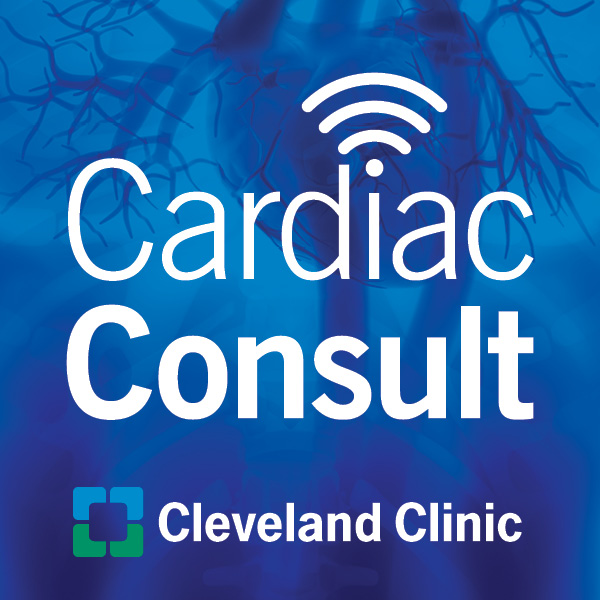
Cardiac Consult
A Cleveland Clinic podcast exploring heart, vascular and thoracic topics of interest to healthcare providers: medical and surgical treatments, diagnostic testing, medical conditions, and research, technology and practice issues.
